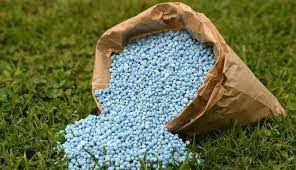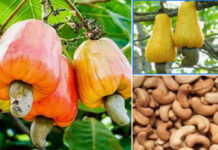Poor smallholder farmers may jointly be contributing K323 billion towards the Affordable Inputs Programme (AIP) in the coming growing season, a jump from K52 billion amidst continued rising fertiliser prices.
Our spot checks in agro-shops show that prices of AIP targeted CAN and Urea have jumped further from around K50 000 two months ago to between K55 000 and K65 000, a development which the Fertiliser Association of Malawi (FAM), an umbrella body of fertiliser suppliers has confirmed.
The increase is attributed to the 25 percent devaluation of the local currency and the war between Ukraine and Russia, major fertiliser supplies.
FAM chief executive officer Mbawaka Brandy Phiri said: “The prices are now between K55 000 and K 65 000 depending on the region. Southern Region is always cheaper due to lower distribution costs.
“The global market prices have been very volatile these past few months and are unpredictable. [In Malawi] prices have been affected both by the war in Ukraine and the devaluation of the kwacha.”
Calculated on the average price of K60 000 per bag, the K323 billion farmers’ contribution translates to 3.5 million AIP beneficiaries paying K92 000 each to redeem two 50-kilogramme bags.
Last growing season, a farmer only required K15 000 to redeem the two bags which government pegged at K25 000 each.
The expected increase has stirred fears that poor farmers will suffer food insecurity as they will not be able to generate funds to redeem the fertiliser.
Traditional Authority Lulanga of Mangochi said he was worried that his subjects might not afford the commodity.
“We have heard that the prices will be increased. That will pose a serious challenge to most peasant farmers who will not have enough resources to buy the fertiliser.
“Already, raising K7 500 is no mean effort for some farmers. So, what if it’s K40 000 or more. I fear most underprivileged families will struggle to make themselves food secure,” he said.
Additionally, in the 2022/23 National Budget, AIP has been allocated K109.5 billion which is a K33 billion lower than the previous year’s K142 billion.
Of the K109.5 billion, like last year, K12 billion is expected to be invested in subsidising maize seeds. This leaves the fertiliser package with a K97 billion kit.
At the current fertiliser price, to supply all the targeted farmers with the two fertiliser bags, there is a need for K420 billion, which minus the budgetary allocation leaves the farmers with the K323 billion problem.
Meanwhile, Phiri has proposed that government should free the suppliers to determine how much farmers will pay as top up.
“FAM is advocating for the government to adopt a flexible top up approach which will allow companies to determine the top up amount and force them to compete for customers on price, quality and service.
“This was done previously, and successfully so, with Fisp [Farm Inputs Subsidy Programme, the AIP predecessor]. Government can then allocate a fixed contribution to each farmer knowing that any price changes will not affect the overall AIP budget.
“Given that currently the fertiliser prices are very volatile this would be the best way to address the problem while ensuring that AIP remains a sustainable programme,”she said.
The capping of AIP fertiliser at K25 000 is widely viewed to have contributed to erratic supply in most parts of the country.
Farmers Union of Malawi chief executive officer Jacob Nyirongo also shared Phiri’s sentiments: “The mixed performance of the programme can largely be attributed to the fixing of the fertiliser price of the 50kg bag which affected availability of fertiliser on the market, especially during the 2021/2022 season.
“Malawi imports all of its fertilisers and has no control over production and transport costs. Fixing the fertiliser subsidy price puts fiscal pressure on government and affects the sustainability of the programme.
Ministry of Agriculture spokesperson Gracian Lungu said the government is expected to reform the programme’s implementation.
“We will soon announce the reforms and that will be the appropriate time for the nation to know what we have planned. What I can say is that the pricing is one of the areas that will influence some of the reform areas,” he said.
Russia is the fourth largest producer of chemical fertilisers in the world. Ukraine is also among the top 20, and Belarus is a major player too. Collectively, these three countries produce about 10 percent of the world’s nitrogen and phosphorus fertilisers, and 35 percent of the world’s potassium.
“Although Malawi imports most of its fertilisers from China, United Arab Emirates and India the global deficits will push the price up,” forecasted Mwapata Institute, a policy think tank, in its report filed in April this year.
As a way forward, Mwapata said there was need for an agreement on “AIP reforms as soon as possible to improve land, labour and fertiliser productivity for locally produced maize and legumes.
“Avoid delays in the procurement and delivery of AIP inputs for the 2022/23 season, given that fertilisers are likely to be in short supply on the world market.”








